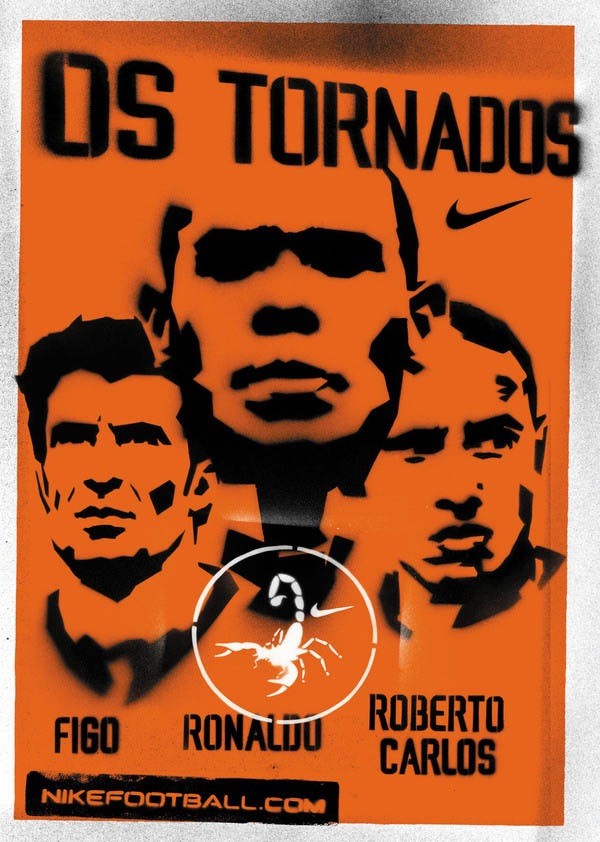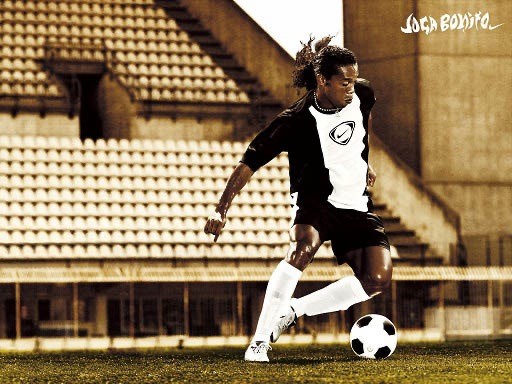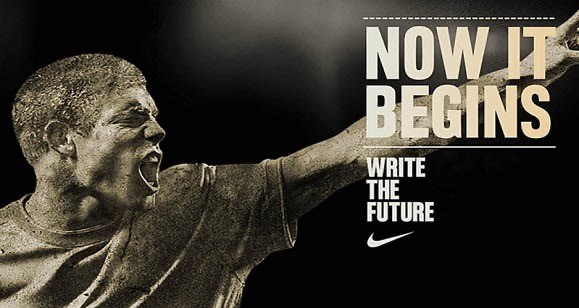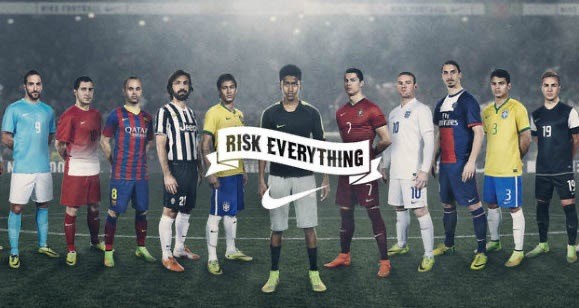JUST DO IT: NIKE'S WORLD CUP AD CAMPAIGNS THROUGH TIME
In their battle for commercial supremacy over the world’s game they have both innovated and created a slew of creative advertising slogans and campaigns that have taken their brand and the game of football to wider markets, in wider locations, with a greater sense of local understanding each and every time.
Before 1994 and Nike’s conscious effort to introduce themselves as a power within the game, Adidas held firm sway over the game’s biggest event. However, when the game went global and ventured for the first time to the United States, Nike saw an opportunity to build a niche for themselves, challenge the Adidas hegemony and market their products to willing audiences in a slightly different way to what football fans had come to expect.
Here we take a look at the way the world cup has integrated print-based advertising campaigns and the rise and rise of Nike as one of the sport’s major players in the all-out war for dollars, pounds, people and places.
Focusing on their general, all-encompassing world cup campaigns, here’s a look back at the posters that accompanied their moving image campaigns and led to them becoming one of the beautiful game’s most ubiquitous backers.
USA WORLD CUP 1994 AND FRANCE WORLD CUP 1998
Whilst both tournaments saw Nike usher in the era of “the tournament message,” neither of the TV advertisements produced for the competitions were accompanied by poster campaigns, Nike instead focusing their efforts on imbedding themselves deep into public psyche through the most consumed medium of all - television.
The advertisements – particularly the critically acclaimed “Brazilian team in an airport”spot that raised the curtain on France ’98 – were fun, creative and a huge step in Nike breaking the popularity that Adidas had held down, pretty much unchallenged, for the better part of 2 decades.
JAPAN & SOUTH KOREA WORLD CUP 2002
With 1998 and the success of their televisual spot that year, Nike had set a pretty high bar which was always going to be a difficult one to follow, but they did follow it with their “secret tournament” campaign.
As always, their focus was very much on the individual and the aspiration of their consumers to be like their heroes, so with that in mind, Nike put together a promotion which saw teams of three of the most talented individuals in the world (Nike clients) form small teams of three and face-off in a death match style next goal wins tournaments.
The ads were slick, popular, and made a star, once again, out of Elvis Presley. The poster campaigns stuck with the Nike theme of youthful vigour and honed in on the street art movement of the time by encompassing street art like graphics of each of the teams and their superstar player (depending on the country the ad was being displayed in) at the head of his team.

This was one that did the rounds in much of Brazil and Latin America, with the Portuguese speaking three of Luis Figo, Ronaldo and Roberto Carlos adorning the billboards of that bourgeoning market.
Hugely successful in confirming Nike’s place as part of the powerful duopoly of the world game, their leading figure in this ad - Ronaldo of Brazil - went on to lead his side to glory with a tournament leading 8 goals and duly laying rest the demons of 4 years prior.
GERMANY WORLD CUP 2006
Nike brought the phrase Joga Bonito into public consciousness with a campaign that focused even more heavily on the Nike idea of self-aspiration.
The term Joga Bonito means to play beautifully and in a series of vignettes created for television they spotlighted their stars in individual adverts (again based on region and country) and highlighted propensity to play the beautiful game in a beautiful way as they would have as children when freedom of expression, rather than drive for results was ones foremost desire.
The poster boy for this movement was Brazilian reigning world player of the year, Ronaldinho, whose huge smile, artistic guile and charismatic disposition had captivated the watching world in 3 years of brilliance as Barcelona’s leading light.

An empty stadium and an image of Ronaldinho in full flight with nothing but himself for company and the simple phrase Joga Binto annotating the action. The message being that we all start out for the love of the game not for the love of what the game brings, so aspire to play the game the way it was meant, irrespective of the material goods that come with it. Ronaldinho, a player who seemingly always played with a smile on his face and with imagination in mind, epitomised this motif.
SOUTH AFRICA WORLD CUP 2010
Nike’s continued focus on the individual once again allowed them a lot of leeway and a lot of reach with which to spread their word and with the “Write the Future” slogan, Nike put together one of their most creative and revered advertising campaigns to date.
In the television advertisement we join their stars in crucial situations as they are about to make or break their futures and, in essence, “write the future” based on whether their in-game decision making is right or wrong. The fine lines between success and failure were shown with highly exaggerated and highly amusing consequence scenes of their future prospects thus imploring consumers to get it right and scribe their success filled future.

One of the poster campaigns that made its way to these isles played heavily on the English propensity to dwell on the heroes of the 1966 world cup, with England international of the time, and Nike client James Milner heading the ad. Apt, powerful and with a strong overriding message, the team and its fans were asked to subtlety let the past stay in the past, start again and rewrite a future filled hopefully with success.
Unfortunately for England it failed to play out in that way but the message is one that certainly continues to reside.
BRAZIL WORLD CUP 2014
This year’s campaign has been the highly regarded “Risk Everything” slogan. A number of advertising materials have accompanied Nike’s biggest ever assault on the competition’s market and, once again, they’ve landed themselves a winner with high praise for imagination and invention in showcasing.
Again using their carousel of stars to highlight their message Nike released multiple television spots to highlight their message. One of which was an animated feature in which superstars of today were having their imagination and creative spark mocked as a series of drilled, textbook programmed cyborgs replaced the artistry, and with an army of artisans who eliminated risk from their game for safety. However, the players, once given the belief to again risk it all, prevail and eventually render this threat to the freedom and liberation Nike values obsolete.

The 2nd advertisement and the poster image we’re highlighting here, was that of you risking everything to play like Nike’s army of talented superstars. Risking everything, as Nike have always stressed, is to play with freedom, play without fear and to play in the manner the stars who you value most do. Placing you front and centre you can be who you want, when you want and how you want, and fear little as you risk everything you have in order to properly get what you want and what you should from the beautiful game.
Nike’s ascent to the head of the game has been sharp; built on great imagination and superb branding and a number ad campaigns that have changed the face of sports advertising, both in television and print, forever.
In a battle that may wage as long as the game is played, Nike’s ability to combine the medium of television with the medium of print and the still imagery is one that will continue to see it at the forefront of that very public off-field spat.
If you need posters printing or have a print-based campaign in mind, check out the poster printing services we offer. We also have our very own in-house design team with whom you can discuss your creative requirements.
For more information on Photoline and the services we offer, visit www.photoline.co.uk, email us at print@photoline.co.uk, or call us on 0191 2325454.